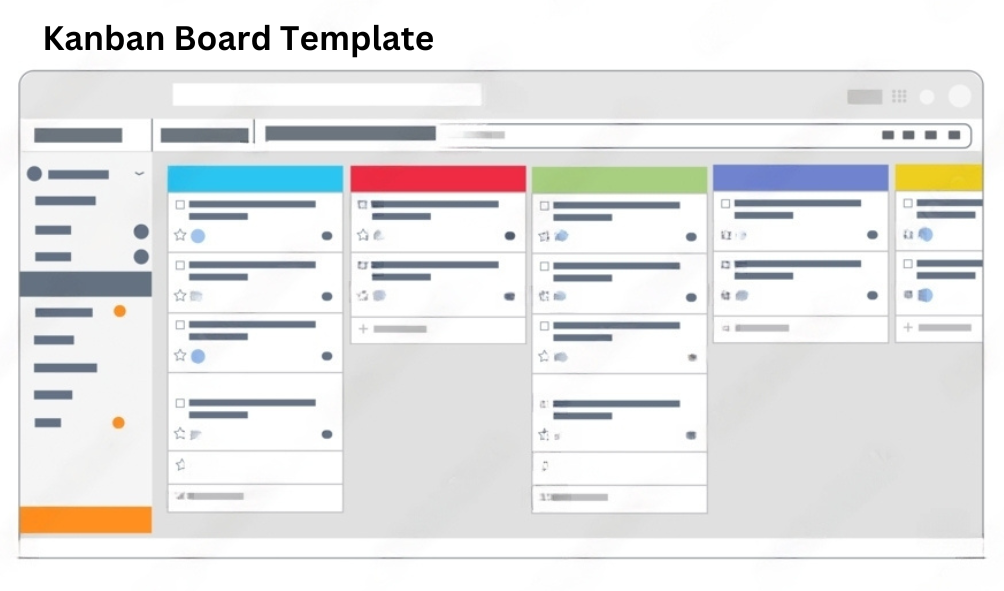Kanban boards have revolutionized task and project management since their inception, evolving significantly from their traditional physical forms to modern digital solutions. This blog explores the transformation of Kanban boards, examining their origins, the shift to digital platforms, and the benefits and features of contemporary digital Kanban solutions.

Origins of Kanban boards
The concept of Kanban originated in Japan, developed by Taiichi Ohno at Toyota in the late 1940s. The Kanban system was designed to improve production efficiency and minimize waste within the manufacturing process. Kanban, which means "signboard" or "billboard" in Japanese, initially used physical cards and boards to manage inventory and production stages.
In its traditional form, a Kanban board consisted of a large board divided into columns that represented different stages of a workflow. Each task or work item was represented by a card that moved through the columns as it progressed from initiation to completion. This visual approach allowed teams to see the status of each task at a glance, facilitating better management and coordination.
The Shift to Digital Kanban boards
As technology advanced, the limitations of traditional physical Kanban boards became apparent. The need for more flexible, accessible, and integrated solutions led to the development of digital Kanban boards. The shift to digital platforms marked a significant evolution in task management, bringing numerous advantages and features that enhanced the Kanban methodology.
Advantages of Digital Kanban Boards
- Enhanced Accessibility: Digital Kanban boards offer unparalleled accessibility compared to their physical counterparts. Team members can access digital boards from anywhere with an internet connection, making them ideal for remote and distributed teams. This accessibility ensures that everyone can stay up-to-date with task progress and collaborate effectively, regardless of location.
- Real-time Updates: One of the most significant benefits of digital Kanban boards is the ability to provide real-time updates. Changes made to tasks, such as status updates, comments, or file attachments, are instantly reflected for all users. This real-time synchronization reduces the risk of miscommunication and ensures that all team members are working with the most current information.
- Improved Collaboration: Digital Kanban boards facilitate enhanced collaboration through integrated communication tools. Team members can leave comments, attach files, and tag colleagues directly on task cards. This centralization of communication within the Kanban board streamlines discussions and keeps all relevant information in one place, reducing the need for separate emails or meetings.
- Automation and Integration: Modern digital Kanban solutions often come with automation features that streamline repetitive tasks and workflows. Automated notifications can alert team members to task updates or approaching deadlines. Additionally, digital Kanban boards can integrate with other project management and productivity tools, creating a cohesive ecosystem for managing tasks and projects efficiently.
- Data and Analytics: Digital Kanban boards provide valuable insights through data and analytics. Users can track key metrics such as task completion rates, lead times, and workflow bottlenecks. These data-driven insights help teams identify areas for improvement, optimize processes, and make informed decisions based on performance metrics.
Key Features of Modern Digital Kanban boards
Contemporary digital Kanban boards come equipped with a variety of features that enhance their functionality and usability. Some of the key features include:
- Customizable Columns and Workflows: Digital Kanban boards allow users to customize columns and workflows to match their specific needs. Teams can create and modify columns to represent different stages of their workflow, ensuring that the board aligns with their processes and preferences.
- Task Management and Prioritization: Digital Kanban boards offer robust task management capabilities. Users can prioritize tasks, set due dates, assign tasks to team members, and track progress. This functionality helps teams stay organized and focused on their most important work, ensuring that tasks are completed efficiently.
- Visual Analytics and Reporting: Advanced reporting and analytics features provide visual representations of key metrics and performance indicators. Teams can generate charts, graphs, and reports to analyze workflow efficiency, track progress, and identify trends. These insights help teams make data-driven decisions and continuously improve their processes.
- Mobile Access and Responsiveness: Many digital Kanban boards offer mobile apps or responsive designs, allowing users to access and manage their boards from smartphones and tablets. This mobile accessibility ensures that team members can stay connected and updated on the go, making it easier to manage tasks and projects from anywhere. javascript:void(0);
Implementing Digital Kanban boards
Implementing digital Kanban boards involves several key steps to ensure a successful transition from traditional systems:
- Customise the Board: Set up your digital Kanban board by creating columns that reflect your workflow stages. Customize task cards to include relevant information, such as descriptions, due dates, and attachments. Ensure that the board is tailored to your team’s specific processes and workflows.
- Train Your Team: Provide training and support to help your team transition to the digital Kanban board. Offer tutorials, guides, and hands-on training to ensure that team members are comfortable using the new system and can leverage its features effectively.
- Monitor and Optimize: Regularly review the performance of your digital Kanban board and make adjustments as needed. Use data and feedback to identify areas for improvement and optimize the board to better meet your team’s needs and goals.
Conclusion
The evolution of Kanban boards from traditional physical systems to advanced digital solutions represents a significant advancement in task management. Digital Kanban boards offer enhanced accessibility, real-time updates, improved collaboration, and valuable data insights. By embracing modern digital Kanban solutions, teams can optimize their workflows, boost productivity, and achieve greater efficiency in their projects. The transition to digital Kanban boards is not just a technological upgrade but a strategic move towards more effective and streamlined task management.